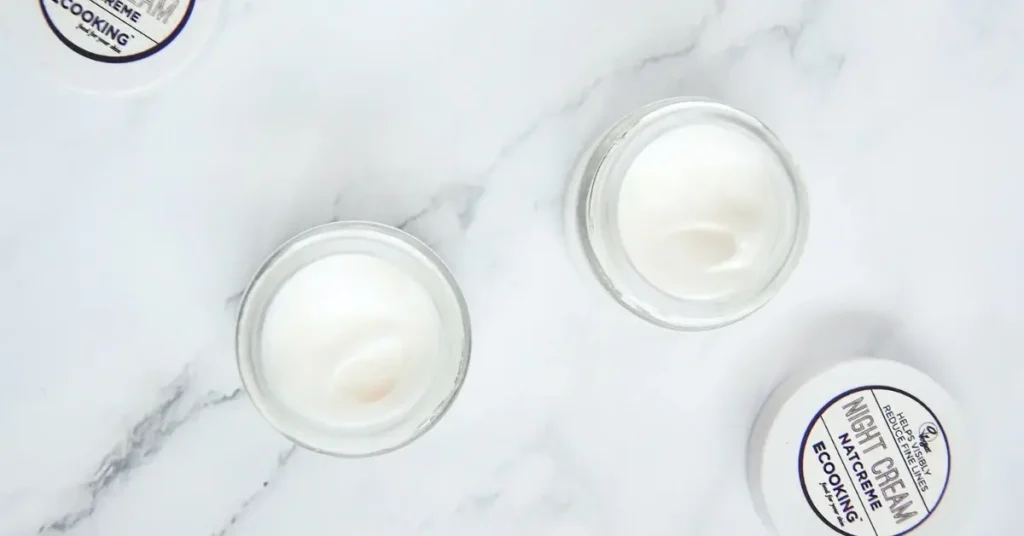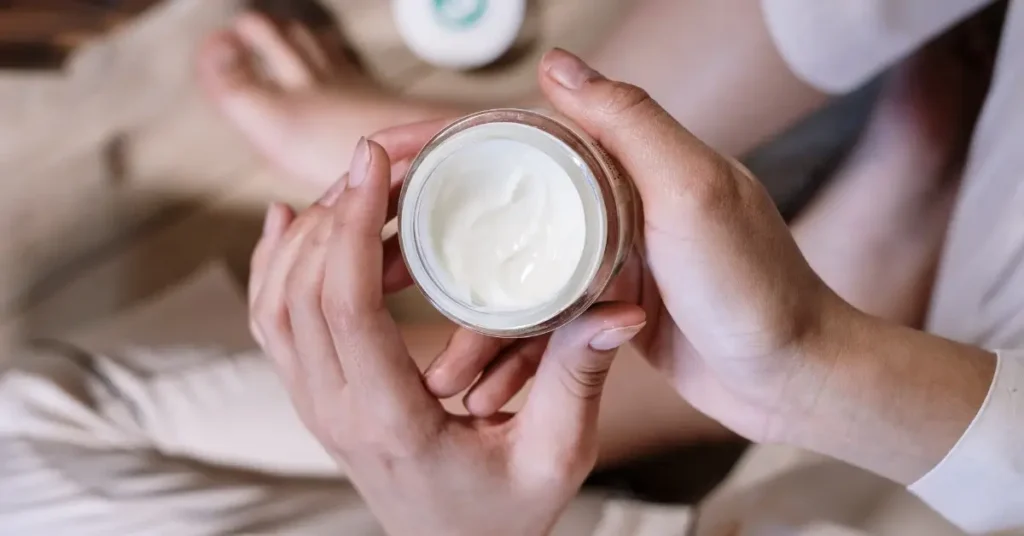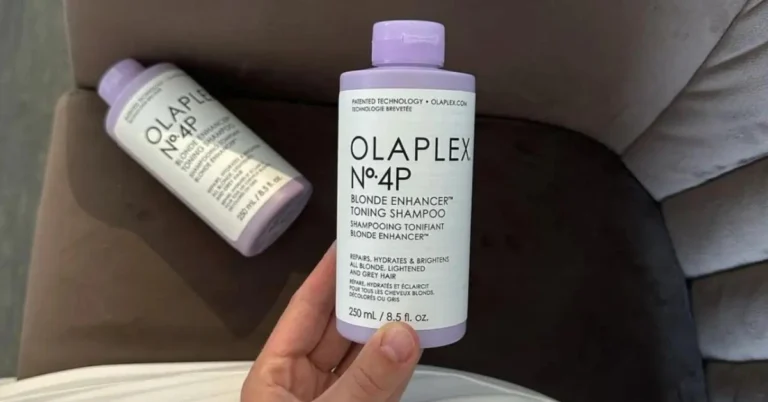Can salicylic acid eliminate fungi? This pressing question haunts us as we search for potent treatment options. Renowned for its effectiveness against acne and a range of skin problems, salicylic acid shows great potential. Yet, the exciting query persists: does this adaptable compound have the power to conquer stubborn fungal infections?
Prepare to embark on an enlightening journey with us. We will venture deep into the realm of salicylic acid, uncovering its remarkable antifungal properties, demystifying its mechanisms of action, and unveiling its areas of utmost effectiveness.
Table of Contents
Does Salicylic Acid Kill Fungus?
Salicylic acid helps treat fungal infections, but special antifungal treatments are often needed for complete elimination.
We understand the sheer stubbornness and complexity of fungal infections, making it vital to grasp both the rewards and limitations of utilizing salicylic acid in their treatment. Armed with this knowledge, you’ll possess the power to make informed decisions, reclaiming control over your skin’s destiny and bidding farewell to those relentless fungal foes.
Get ready to plunge into a captivating exploration. Together, we shall navigate a captivating landscape of scientific revelations, expert insights, and practical advice. By the journey’s end, you will possess a comprehensive understanding of salicylic acid’s potential to combat fungal infections.
Join us on this exhilarating quest, as we unravel the mysteries surrounding salicylic acid’s prowess and unlock the secrets to healthy, fungus-free skin.
Salicylic Acid: Overview
When it comes to treating various skin conditions, salicylic acid is a powerhouse ingredient that comes to our minds. A question that arises often is, does salicylic acid kill fungus? Let us provide you with an overview of this remarkable compound.
Salicylic acid is an active secondary metabolite found in bacteria, fungi, and plants. It is synthesized from chorismate, derived from the shikimate pathway. As a chemical exfoliator, it removes dead skin cells and belongs to a group of medications known as keratolytic agents.
Apart from being an effective exfoliator, salicylic acid exhibits keratolytic and anti-inflammatory properties which are beneficial for the skin. These properties play a crucial role in explaining its potential against fungal infections.
Salicylic acid has been proven to inhibit the growth of certain fungi like Eutypa lata. Its effectiveness in dissolving accumulated fungi within clogged pores makes it a popular choice for treating fungal acne.
While salicylic acid demonstrates considerable potential in treating fungal infections, it’s important to remember that it isn’t the only option. Undecylenic acid, for instance, is a fatty acid used as an active ingredient in numerous topical antifungal treatments . We hope our brief overview has helped provide insight into the capabilities of salicylic acid, particularly in relation to fungal infections.
Fungal Infections and Treatment
Are you wondering if salicylic acid can help in dealing with those pesky fungal infections? You’re in luck! In this guide, we’ll talk about how salicylic acid plays an essential role in combating different types of fungal infections and their effects on human health. So, let’s dive in!
Types of Fungal Infections
Fungal infections can target various parts of our body, leading to diverse symptoms and discomfort. Some common ones include:
- Athlete’s foot
- Ringworm
- Candida
- Tinea versicolor
The good news is that salicylic acid has been found to be beneficial in managing these infections. Salicylic acid can indeed kill fungus and is frequently used in various skin treatment formulations.
Effects on Human Health
When left untreated, fungal infections can negatively impact our overall health. Some possible side effects are:
- Itchiness and discomfort
- Discoloration and changes in the texture of nails or skin
- Compromised immune system
Thanks to salicylic acid’s antifungal properties, using products containing this ingredient can assist in alleviating the symptoms associated with fungal infections. Moreover, it helps dissolve fungi that accumulate in clogged pores and aids in the removal of dead skin cells.
Remember: Consult a healthcare professional for accurate diagnosis and treatment options. By doing so, you can effectively address fungal infections and improve your overall well-being.
Salicylic Acid vs. Fungi
You might be wondering, does salicylic acid kill fungus? Well, let’s dive right into the world of this fascinating chemical compound and its battle against fungi!
How Salicylic Acid Kills Fungi

Salicylic acid is a widely known compound often used in the treatment of skin conditions such as acne and warts. However, it has also shown promising antifungal properties. This is due to its ability to break down the fungal cell walls and interfere with the fungus’s growth and reproduction. By doing so, it helps to reduce fungal infections and promote the healing of affected areas.
Efficiency and Limitations
While salicylic acid has proven to be an effective antifungal agent, it’s vital to recognize its limitations. It is primarily used as a topical treatment, meaning its effectiveness relies on direct contact with the fungi. In cases where the fungal infection is deep-seated, salicylic acid may not be as efficient.
Additionally, it may not work as effectively on toenail fungus, as it can’t penetrate the nail as easily as some other treatments. A combination of salicylic acid with other antifungal agents might be necessary for more stubborn cases.
Though salicylic acid can be a useful tool in the fight against fungi, it’s essential to consult with a healthcare professional before attempting any self-treatment, as more extensive or severe infections might require alternative strategies. In any case, understanding the ins and outs of salicylic acid certainly broadens our arsenal against those pesky fungi!
How to Use Salicylic Acid Against Fungus: Step by Step

You’ve probably heard the question: “does salicylic acid kill fungus?” While salicylic acid is commonly known for fighting acne, it can also help with certain fungal infections. So, let’s jump right into learning how to use salicylic acid against fungus step by step. Remember, always consult your doctor before starting any new treatment.
Step 1: Clean the affected area gently to remove any oils, dirt or debris. This ensures that the salicylic acid can effectively reach the target fungus. Use a gentle cleanser and a clean towel to dry your skin before applying the salicylic acid
Step 2: Select the appropriate concentration of salicylic acid for your skin type and the severity of your fungal infection. Lower concentrations (1-2%) are generally safer for sensitive skin, while higher concentrations (3-6%) are more effective against stubborn infections. It’s always best to start with a lower concentration and gradually increase if needed.
Step 3: Apply the salicylic acid product directly on the affected area. For creams or gels, use a cotton swab or your finger to gently dab a thin layer. For pads or solution, swipe the product evenly across the skin. Always follow the instructions on the product label and avoid applying more than recommended.
Step 4: Let the salicylic acid work its magic for the specified amount of time on the label. Avoid leaving it on for a longer duration, as it may increase the chance of skin irritation and acid poisoning. After the specified time, gently rinse off the product with lukewarm water and pat the skin dry.
Repeat these steps as directed by your doctor or the product label, usually once or twice a day until the fungus is gone. To prevent future fungal infections, maintain good hygiene and keep your skin clean and dry.
Here are some pro tips to enhance your salicylic acid experience:
- Be patient! Treating fungus with salicylic acid may take some time, so don’t get discouraged if you don’t see immediate results.
- Avoid using salicylic acid products on broken or inflamed skin to prevent irritation.
- Remember that mixing salicylic acid with certain medications or skincare products may cause unwanted side effects, so consult your doctor before combining treatments.
And there you have it! With a bit of patience and diligence, you’re on your way to conquering fungus with the help of salicylic acid. Stay consistent, follow the guidance listed above, and always reach out to your doctor if you’re unsure of any steps or noticing unusual side effects. Good luck!
Alternative Fungal Treatments
Have you ever wondered, “Does salicylic acid kill fungus?” Well, we are here to help you explore alternative fungal treatments to keep your skin healthy and radiant. Let’s delve into the world of antifungal medications and natural remedies.
Antifungal Medications
When it comes to antifungal medications, salicylic acid has some fungistatic properties. It can inhibit fungal germination and damage the conidial plasma membrane, leading to protein leakage. However, salicylic acid may not be the only option. There are many other antifungal medications available for different types of fungal infections, ranging from creams and ointments to oral medications like fluconazole.
Natural Remedies
If you prefer a more natural approach, there are numerous options to consider when treating fungal infections. For instance, undecylenic acid is a fatty acid that can be found in the body and is commonly used in many topical antifungal treatments.
Another option is tea tree oil, which is found in various products such as body washes. A blend of tea tree oil, eucalyptus oil, and peppermint oil can be used like a standard body wash to cleanse bacteria and fungus on the skin. It can also help prevent acne.
There you have it! Although salicylic acid possesses some antifungal properties, there are plenty of alternative treatments that could be a better fit for your needs. It’s crucial to consult a healthcare professional before starting any new treatments, so make sure to discuss these options with them. Good luck on your journey to healthier skin!
Prevention and Management Tips

As we dive into the world of fungal treatments, you might be wondering, “does salicylic acid kill fungus?”. The answer is yes! Salicylic acid is effective in dissolving fungi inside clogged pores and removing dead skin cells. To ensure you’re well-equipped to fight and prevent fungal infections, we’ve prepared some handy tips focusing on hygiene practices and environmental factors.
Hygiene Practices
- Wash regularly: Keep your skin clean with gentle, fragrance-free soaps and warm water. Pay special attention to areas where fungal infections are more likely to occur, such as feet, underarms, and groin.
- Dry thoroughly: Damp skin can be a breeding ground for fungi. After bathing, be sure to dry your skin completely, particularly between toes and other folds.
- Change clothes: Don’t wear the same clothes for extended periods, especially when you’re sweaty. Change into clean, dry clothes and avoid sharing garments with others to prevent cross-contamination.
- Footwear matters: To keep your feet fungus-free, wear moisture-wicking socks, and breathable shoes. Don’t forget to give your shoes time to air out between uses.
Environmental Factors
- Clean surfaces: Regularly sanitize surfaces in your home, especially in the kitchen, bathroom, and areas where you might walk barefoot.
- Watch shared spaces: Be cautious when using public facilities like gyms and swimming pools. Wear flip-flops and keep your belongings in a separate plastic bag to limit exposure to fungi.
- Avoid damp environments: Keep your living spaces well-ventilated, and use dehumidifiers if necessary to reduce humidity in the air, discouraging fungal growth.
By implementing these simple yet effective practices, you can significantly reduce the risk of fungal infections and use treatments like salicylic acid more confidently to combat fungus. Keep up the good work to maintain a fungus-free life!
FAQ

Can salicylic acid kill toenail fungus?
The use of salicylic acid in a liquid preparation is aimed at penetrating the nail to reduce and/or control onychomycosis, a fungal infection of the nail. However, it is important to note that salicylic acid alone may not completely eliminate the infection and specialized antifungal treatments are often necessary
What makes skin fungus worse?
Factors that can worsen skin fungus include prolonged moisture and warmth, poor hygiene, compromised immune system, sharing contaminated items, tight-fitting clothing, excessive sweating, and using occlusive or non-breathable materials that trap moisture against the skin.
What should I eat if I have fungus?
Examples of foods that can be beneficial when dealing with a fungal infection include:
Garlic, coconut oil, vegetables, lean proteins like chicken and fish, yogurt and other probiotic-rich foods
Can you get fungus if you touch it?
It is possible to contract a fungal infection by touching infected surfaces or coming into direct contact with an infected person or animal. Fungi can thrive in warm and moist environments, so proper hygiene and avoiding contact with contaminated sources can help reduce the risk of infection.
If you liked this blog article about the question: Does Salicylic Acid Kill Fungus?, don’t forget to leave us a comment down below to tell us about your experience.





